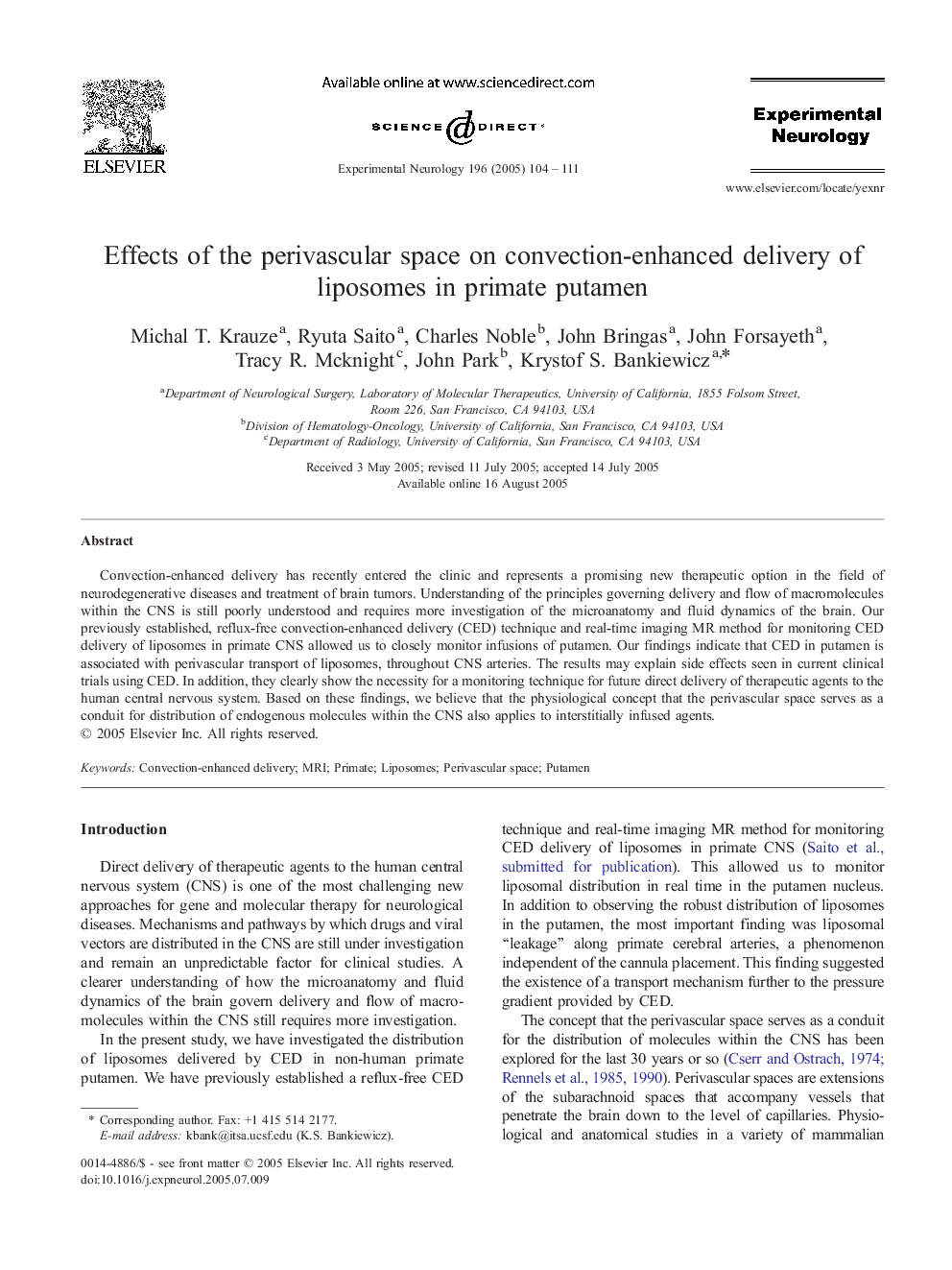| Article ID | Journal | Published Year | Pages | File Type |
|---|---|---|---|---|
| 9191994 | Experimental Neurology | 2005 | 8 Pages |
Abstract
Convection-enhanced delivery has recently entered the clinic and represents a promising new therapeutic option in the field of neurodegenerative diseases and treatment of brain tumors. Understanding of the principles governing delivery and flow of macromolecules within the CNS is still poorly understood and requires more investigation of the microanatomy and fluid dynamics of the brain. Our previously established, reflux-free convection-enhanced delivery (CED) technique and real-time imaging MR method for monitoring CED delivery of liposomes in primate CNS allowed us to closely monitor infusions of putamen. Our findings indicate that CED in putamen is associated with perivascular transport of liposomes, throughout CNS arteries. The results may explain side effects seen in current clinical trials using CED. In addition, they clearly show the necessity for a monitoring technique for future direct delivery of therapeutic agents to the human central nervous system. Based on these findings, we believe that the physiological concept that the perivascular space serves as a conduit for distribution of endogenous molecules within the CNS also applies to interstitially infused agents.
Related Topics
Life Sciences
Neuroscience
Neurology
Authors
Michal T. Krauze, Ryuta Saito, Charles Noble, John Bringas, John Forsayeth, Tracy R. Mcknight, John Park, Krystof S. Bankiewicz,
